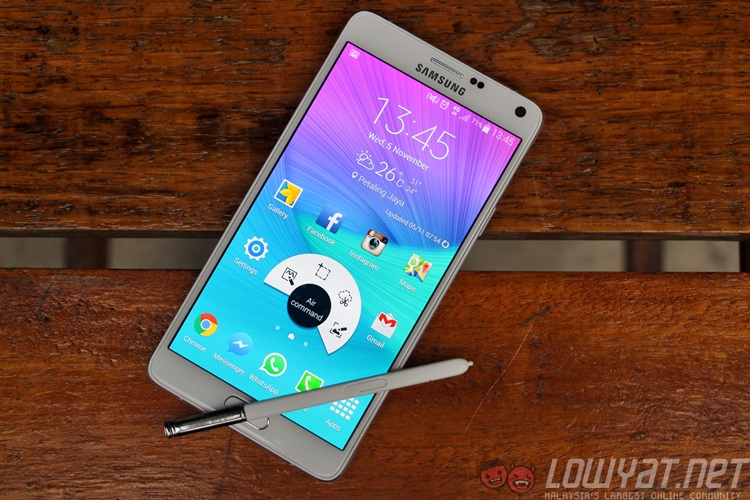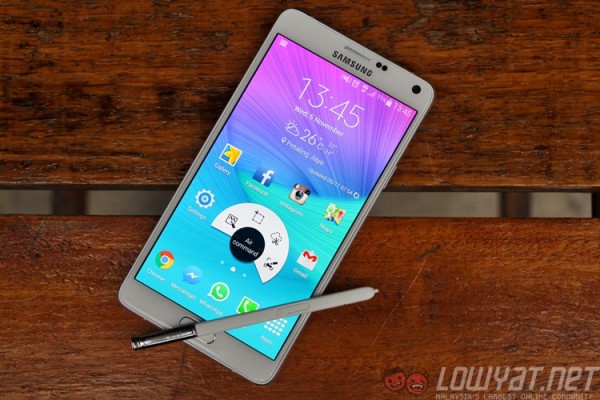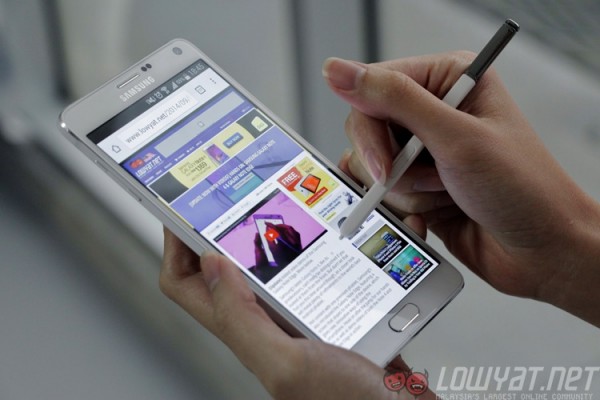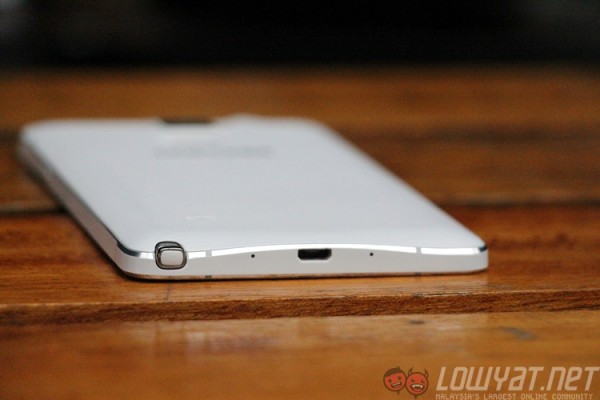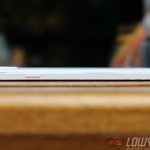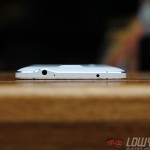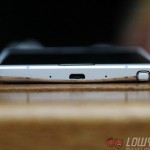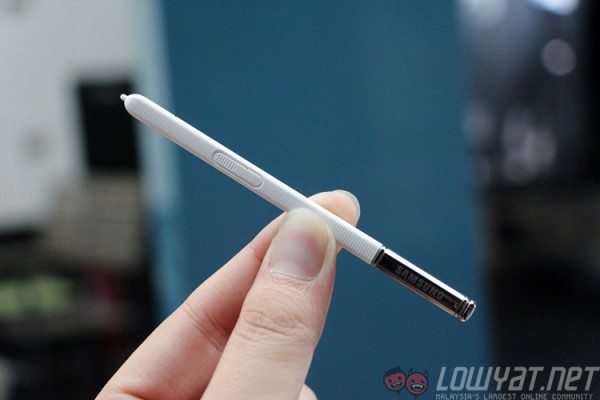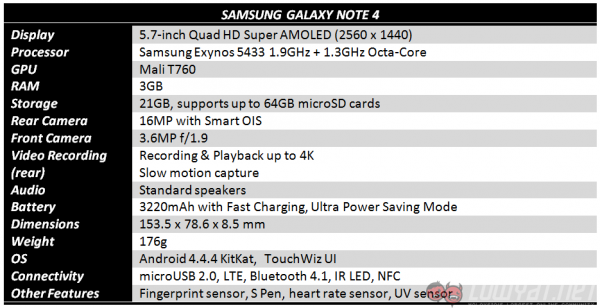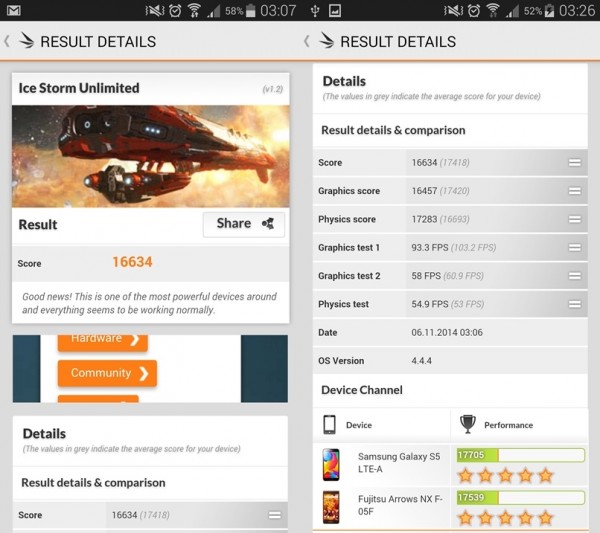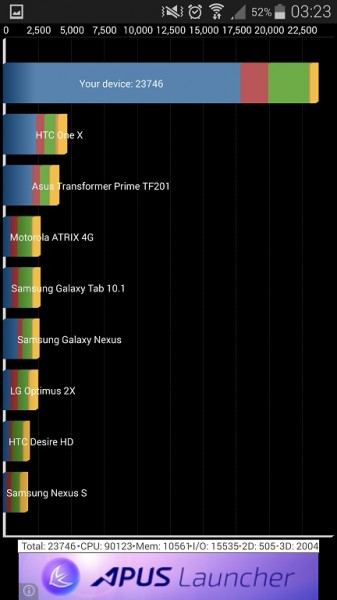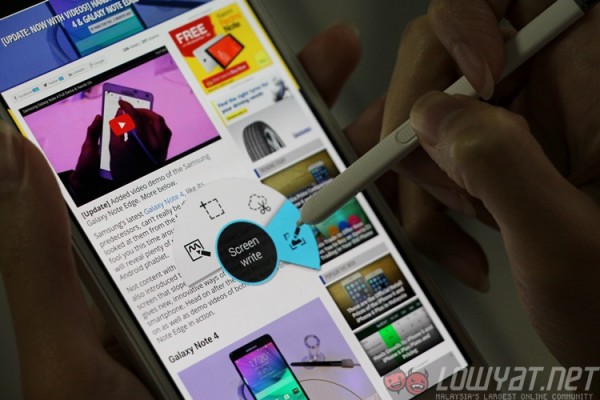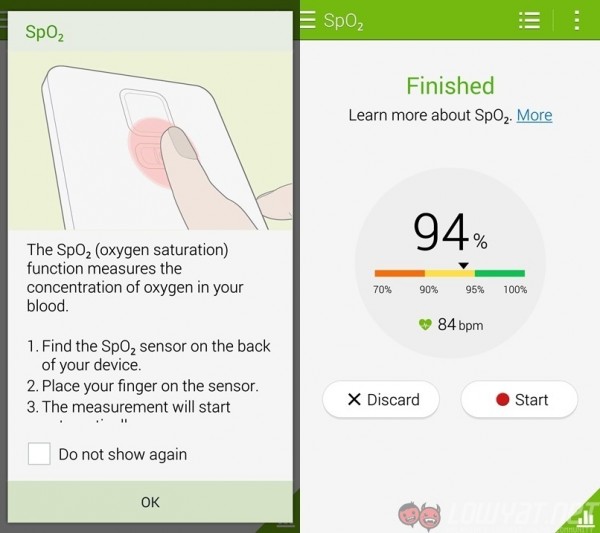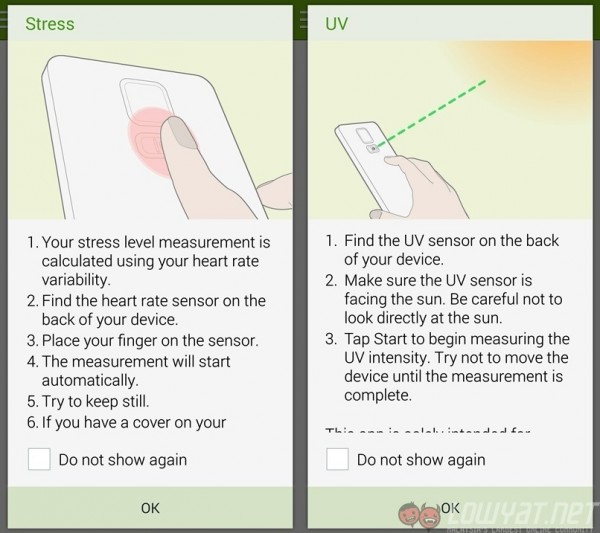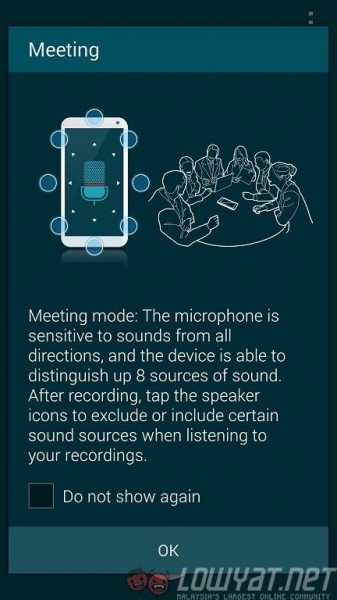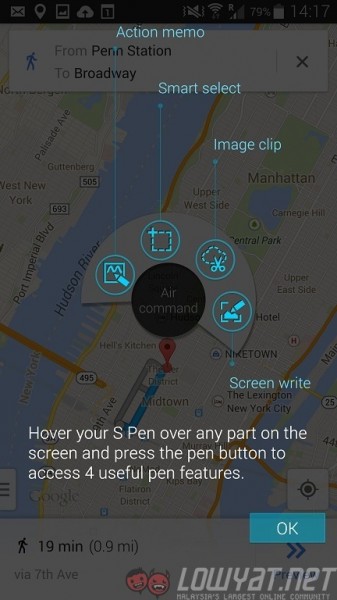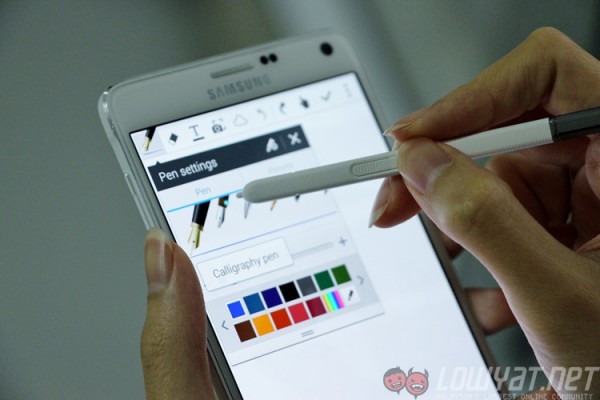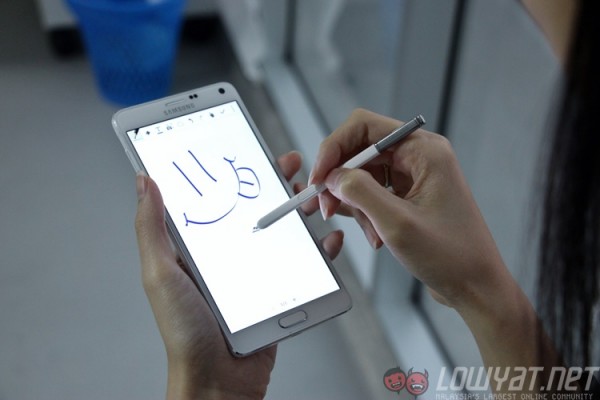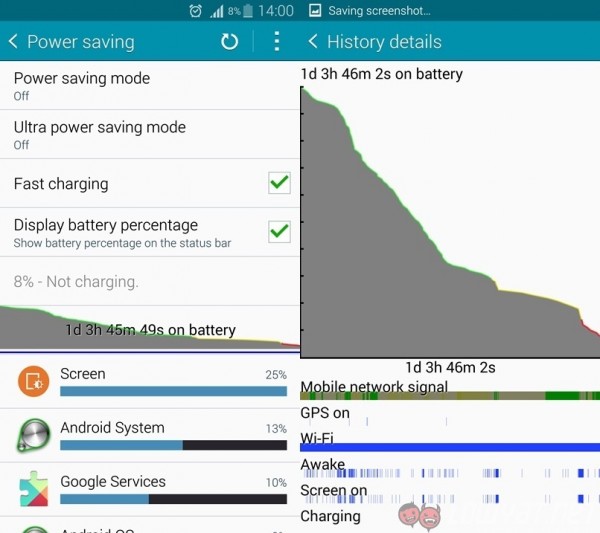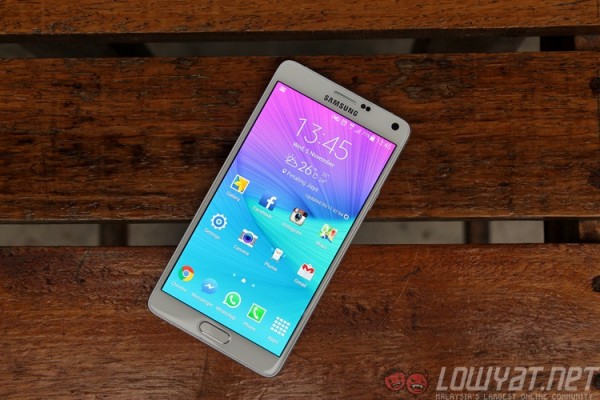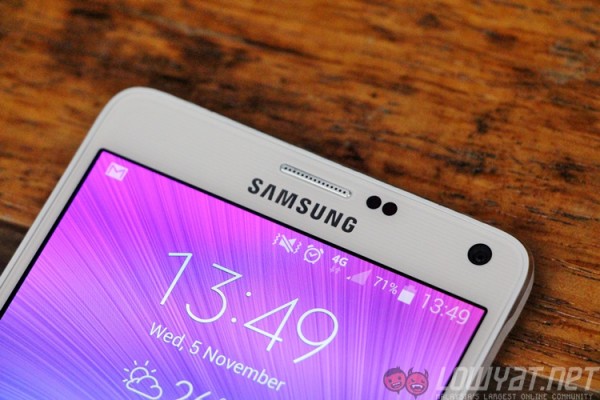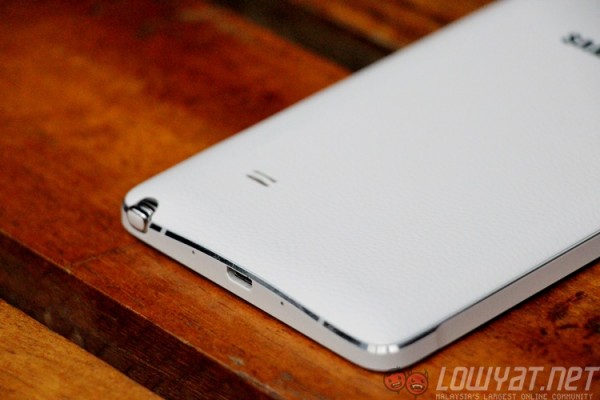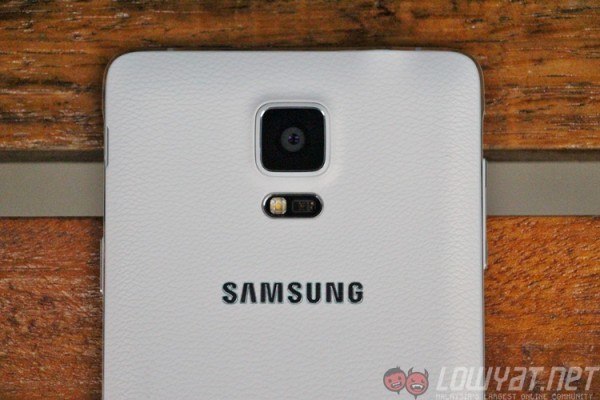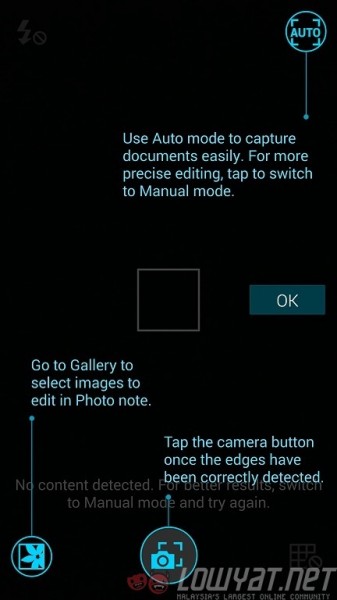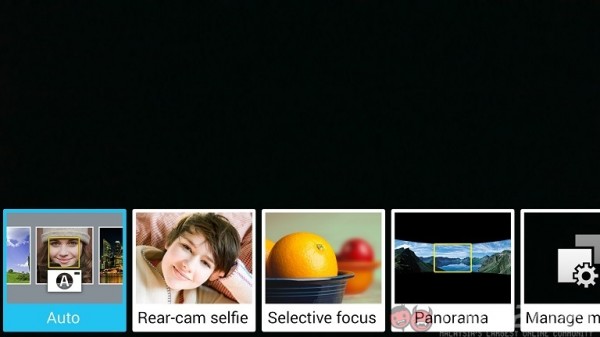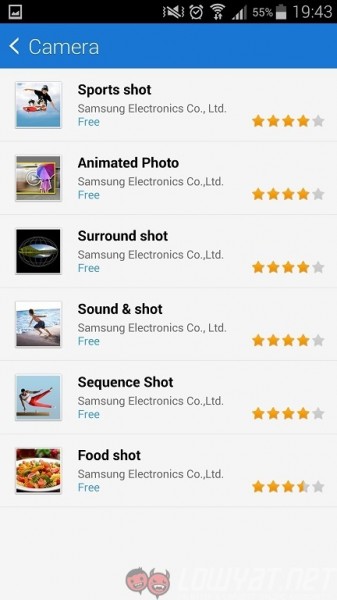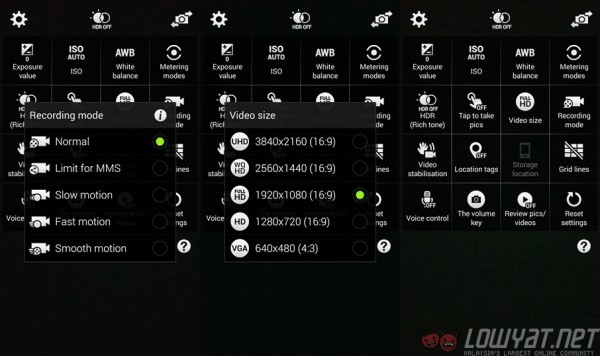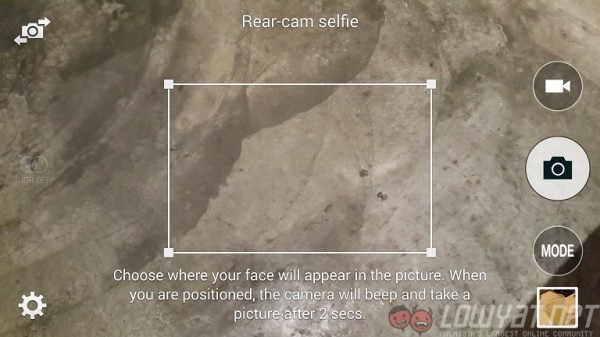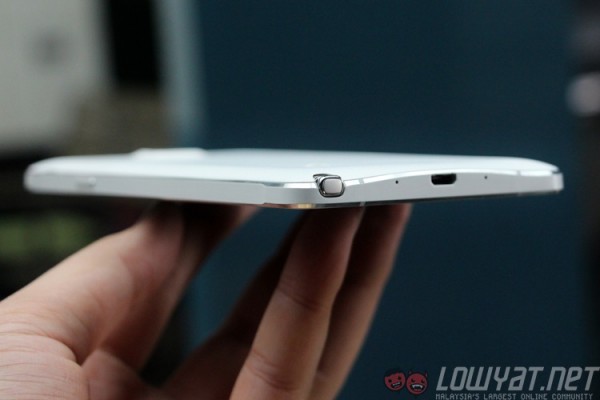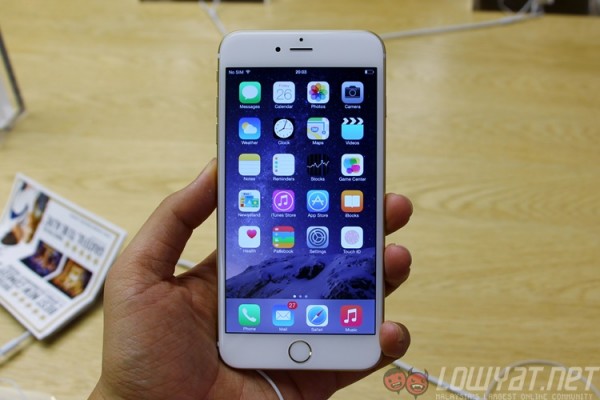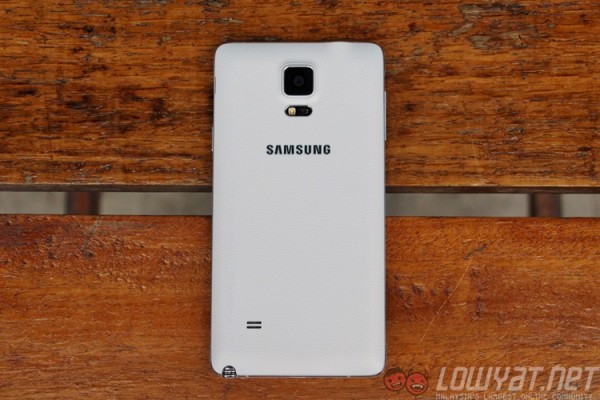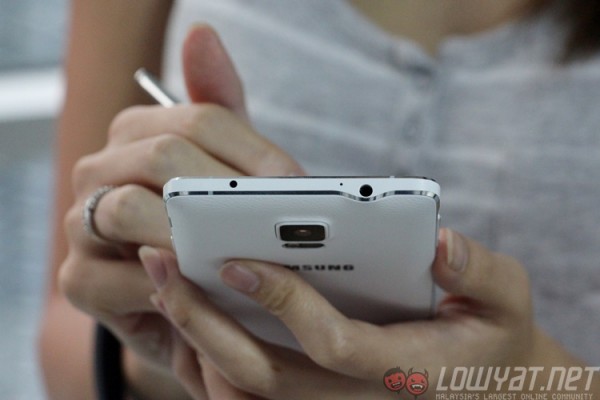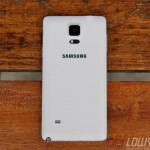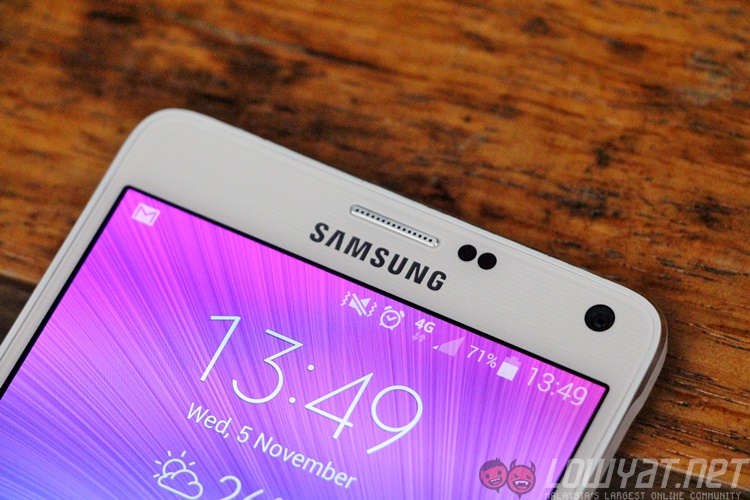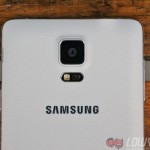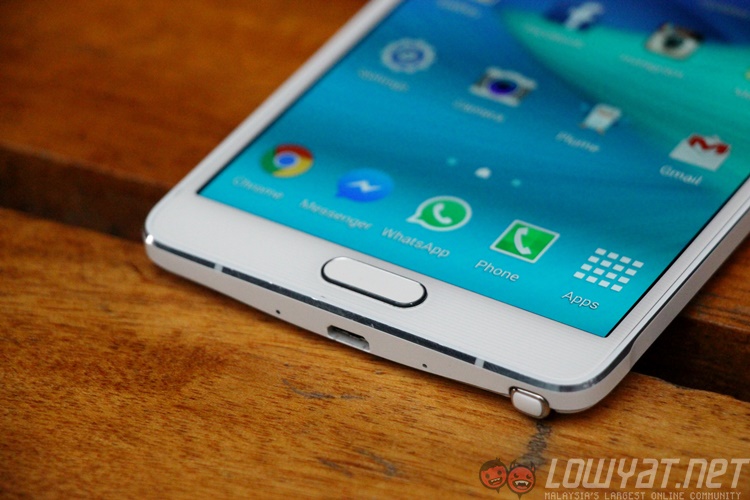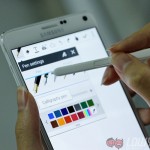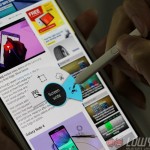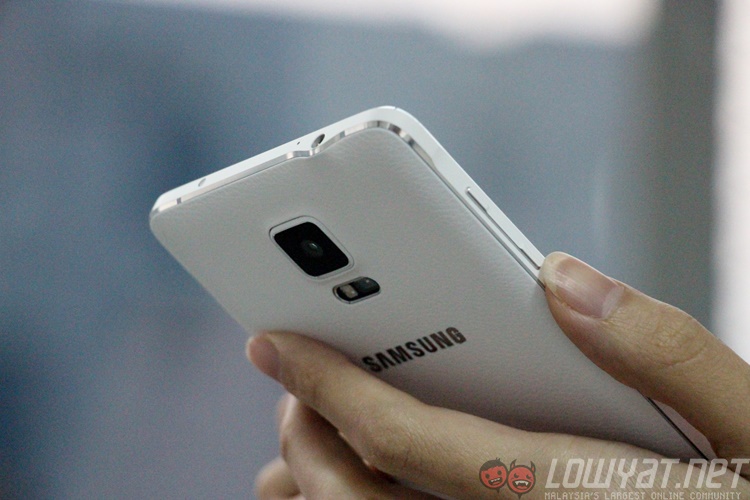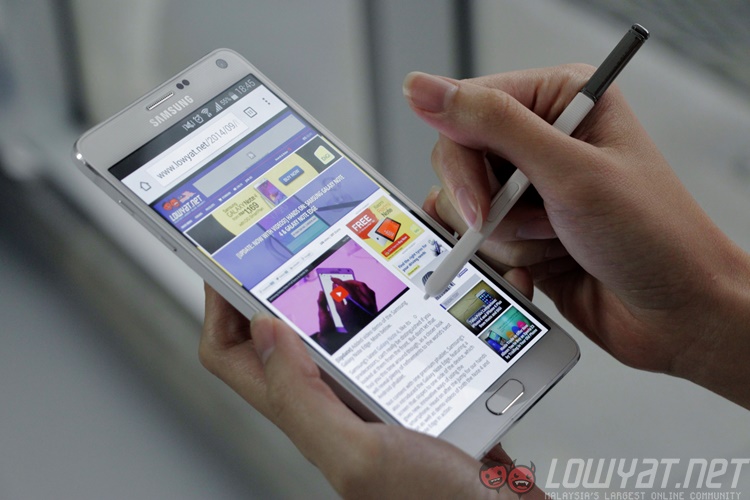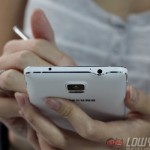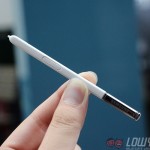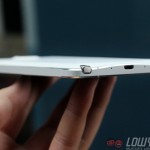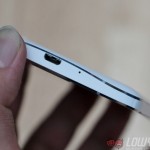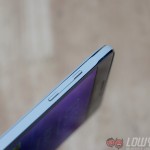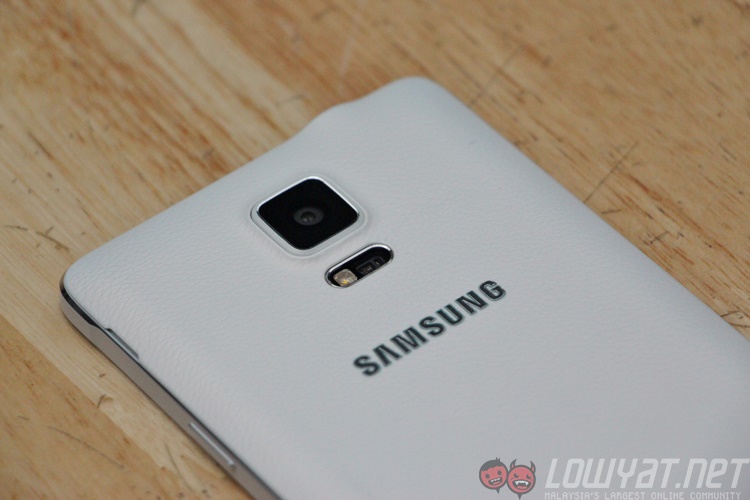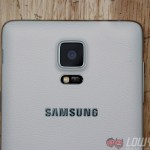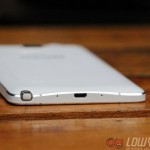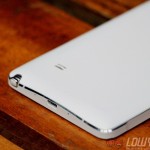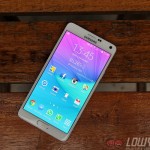There used to be a time when the stylus was a dead-in-the-water tech invention, one which was quickly replaced by touchscreens that became the norm to this day. Three years ago, Samsung defied that idea with the S Pen on the first-generation Galaxy Note – and it proved so popular the company never looked back.
The Galaxy Note 4 is the South Korean giants’ latest iteration of what has become Samsung’s golden child in its smartphone roster. This time around, though, there’s a new pretender hoping to take some valuable market share off the Note 4 – and the competition does not come any bigger than the Apple iPhone 6 Plus. Does the Note still hold the edge?
FIRST IMPRESSIONS
For years Samsung have been notorious in its “more of the same” approach when it comes to designing its smartphones. Barring some details, almost every one of them looks visually similar. The company has learnt the hard way that this is not what consumers want year after year, and finally there are some changes.
Starting with the Galaxy Alpha and then with the Note 4, Samsung crafted a new metal frame which will be featured in its future products. While the Alpha is slim and exceptionally comfortable to hold, the 5.7-inch Note 4 needed a different approach. Take a closer look at the faux leather back cover and you’ll see a gentle curve that eases into your hand, but not tapered in its edges so as to make it difficult to grip.
Along the sides of the device, you’ll also notice the shiny diamond-cut edges of the metal frame, adding much more class than chrome plating that appeared on some previous Galaxy phones. The S Pen, too, has a body that’s grippy due to the design.
That’s not to say that the Note 4 has an exceptionally good design, but it is a step in the right direction of Samsung’s path forward in smartphone aesthetics. The Note 4 looks and feels much better than in previous iterations, with a build quality that befits the premium features and equally premium price tag.
HARDWARE
The Galaxy Note 4, just like several previous Galaxy smartphones, comes in two variants: one packing a Snapdragon 805 chipset (SM-N910S) and another with Samsung’s own Exynos 5433 chipset (SM-N910C). The unit that we had is powered by the new octa-core Exynos chipset, and I must admit: it’s a lot better than I expected.
Perhaps it was my low expectations based on my experience with previous Exynos-powered Galaxy smartphones, but the Note 4 zipped through everything I threw at it, from using many Multi Windows to using the camera for extended periods of time. And, battery life with this chipset is pretty impressive too – a big difference from Exynos devices of old.

With 3GB of RAM onboard, the Galaxy Note 4 was rarely troubled by memory issues, while the heart rate monitor has got a few new tricks up its sleeve – more below.
BENCHMARKS
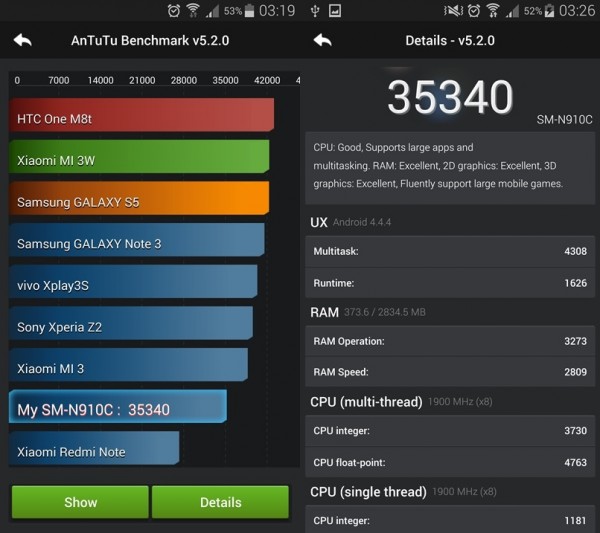 Benchmark results are surprisingly low
Benchmark results are surprisingly low
*Disclaimer: the low benchmark scores are due to the fact that this was a marketing unit from Samsung, and not a final retail unit.
SOFTWARE
Since the Galaxy S5, Samsung has slowly been “cleaning up” its TouchWiz UI, after years of ignoring criticism from users and more importantly, competition from other leaner and more visually appealing Android skins. With the Note 4, the company has further refined its software efforts.
For instance, the skin feels much lighter than before, though this may be due in part to the powerful processor on board. TouchWiz has also incorporated more of Android’s native features, such as a translucent notification bar and app drawer, as well as an Android L-style Recent Apps interface. Speaking of which, this is the only instance where there is noticeable lag on the device: tapping on the Recent Apps/Multitasking button takes up to a second before the cards-style layout appears.
S Note, Samsung’s note-taking app, has been given a new lease of life. Photo Note, a feature within the app that captures an image and converts text found in the frame into text that can be edited, can be a very powerful tool – though it can be a little fussy in picking up text. What I liked about the app was that even tables can be converted without many issues, and if you snap a shot that’s well-lit, Photo Note can work flawlessly.
S Health, now in version 3.0, is even more comprehensive. The heart rate monitor now includes new tracking metrics such as the SpO2 monitor, which checks the concentration of oxygen in your blood; and a stress monitor, which checks for heart rate variability. There’s even a UV sensor, located in the same area as the heart rate monitor.
The integrated finger scanner remains unchanged, requiring you to swipe down over the home button. You can use this to unlock your phone, or link a finger print to automatically sign in to a web service, or even to verify your Samsung account.
That being said, some of Samsung’s suite of unnecessary software remains. While Google Now is a long-press of the home button away, a double-press of the same button opens S Voice – which can be engaged even if the phone is still locked – so the first thing you end up doing after unlocking your phone is to close S Voice.
Of course, no coverage of the Galaxy Note’s software is complete without talking about the S Pen. It is twice more sensitive that the one in the Galaxy Note 3, and even detects when it is facing the screen at an angle, allowing for writing modes with various thickness. Samsung was so confident in the S Pen’s writing capability, it allows you to write in cursive, or even calligraphy.
What the S Pen is most used for, according to Samsung’s internal research, was to navigate around the phone – in particular the web browser – without smudging the screen with fingers. As such, Air Command has also been simplified to just include features like Smart Memo (a note-taking mini app that can capture handwritten notes into text and numbers), Smart Select (crop any part of your screen, and allows for ridiculously easy highlighting images and text – just like with a mouse), Image Clip (just like Smart Select, but lets you crop images in any shape), and Screen Write which captures a screenshot of what’s on the screen and immediately lets you scribble notes or doodle on it.
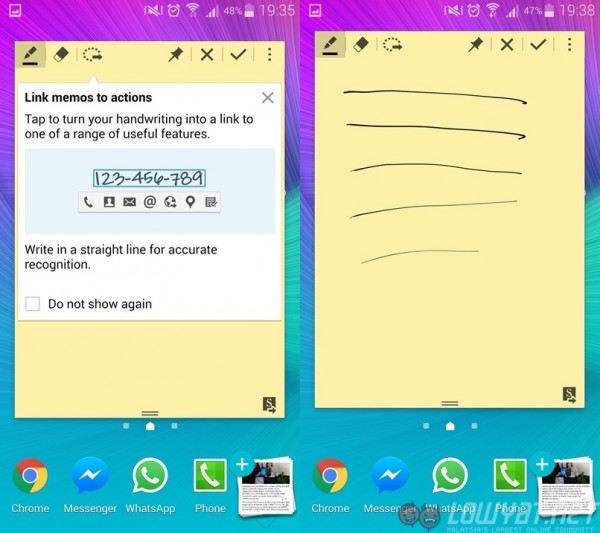 The black lines to the right are the result of swift brushes of the S Pen on the display, with varying degrees of pressure
The black lines to the right are the result of swift brushes of the S Pen on the display, with varying degrees of pressure
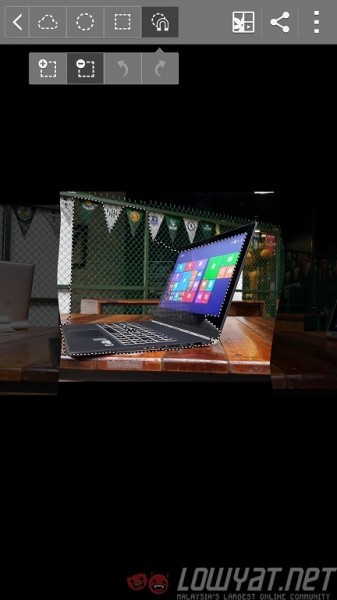 Image Clip can be a bit odd, and the options at the top of the screen can be confusing. You’ll need to hover your S Pen over the icons to see what do they do.
Image Clip can be a bit odd, and the options at the top of the screen can be confusing. You’ll need to hover your S Pen over the icons to see what do they do.
On top of that, you can “minimise” apps from full screen to virtually any size by simply pulling diagonally from the top left and right edges of the screen when you’re in an app. This gesture works both with your fingers as well as with the S Pen.
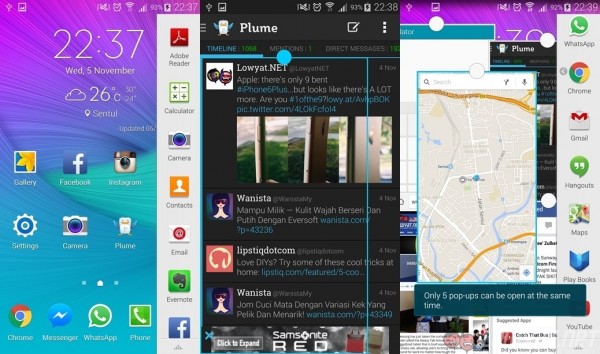 You can open a mini app by long-pressing the Back button, or “minimise” a full-screen app by swiping diagonally from the top left and right edges. You can adjust the size of the mini apps, but only five can be open at any given time.
You can open a mini app by long-pressing the Back button, or “minimise” a full-screen app by swiping diagonally from the top left and right edges. You can adjust the size of the mini apps, but only five can be open at any given time.
These S Pen features can be very powerful productivity tools…but only on specific occasions. I prefer taking notes with a virtual keyboard, but I appreciated the fact that Screen Write allows you to leave more detailed information or instructions, such as scribbling directions on Google Maps, for example. The one part I liked the most is Smart Select, which allows you to crop a section of the screen, and the software detects images (which can be saved on the Scrapbook app) and text (which you can then copy and paste somewhere else).
BATTERY LIFE
For the first time, Samsung has introduced the Fast Charging feature of its own for the Galaxy Note 4, allowing it to charge from zero to 50% battery in just 30 minutes. It isn’t as impressive as, say, Oppo’s VOOC charger, but it gets the job done – having any fast charge feature is better than not having one!
That being said, the 3220mAh battery helps make quite a difference with battery life. It isn’t as impressive as the Sony Xperia Z3’s sensational endurance, but during my review period I consistently managed to last an entire work day until the night – and still have about 25% battery left. And that’s actually impressive considering the processing power needed for the 2K display.
One more thing to note here is with the Exynos 5433 octa-core processor. The impressive battery life appears to also be due in part to Samsung’s latest mobile chipset, which is miles more efficient than Samsung’s previous Exynos efforts.
DISPLAY
One thing that Samsung can never be faulted on is with the quality of its displays. Super AMOLED screens can and does produce saturated hues, making them more vibrant than in real life, but that’s how a lot of consumers would prefer their screens to be anyway.
The Galaxy Note 4 packs a super-sharp 2560 x 1440 resolution 5.7-inch display, something I needed to be reminded of a few days after using it. The fact is, there is no way this screen looks better than a similar Full HD screen – at least not in your everyday tasks. Text on screen is calibrated so it doesn’t look too small (there are about 1.78 times more pixels on the Galaxy Note 4’s screen than a standard Full HD display), but the one place where I really enjoyed having a sharp screen is in the camera app. The generous 5.7-inch display coupled with the high resolution meant that you can see a lot more detail before snapping a picture.
There was an interesting “High Brightness Mode” which was listed in the Galaxy Note 4’s spec sheet, but in all honesty I thought it was more of a myth. Two weeks went by using the device under various lighting conditions before it finally happened: the screen suddenly became exceptionally bright to counter the afternoon sun as I walked in a park one fine Saturday. Obviously, colour reproduction suffered quite a bit under such harsh brightness, but this mode really makes it effortless to use the device under bright sunlight.
AUDIO
One area where the Note 4 seemingly remains unchanged is with the audio quality. The speaker is still located at the bottom left of the device, and audio output is respectable at best. For personal consumption, the Note 4’s speaker is more than adequate, but you’ll need to find something more substantial when viewing for more than one – and that’s quite sad because the screen is so much better than the speaker, making it quite a mismatch.
CAMERA
If there was one aspect where the Note 4 really shines, it is with the camera. Even when I take into account my low expectations of camera performance in Galaxy smartphones, the Galaxy Note 4’s camera really left an impression on me.
It wasn’t about the simple UI that expands into so many user-controllable functions. It wasn’t about the lack of “camera modes” that Samsung used to spam its camera app with. The Note 4 just takes really good pictures, consistently.
And that’s before you go deeper into the smart things Samsung did with the camera software, like making its slew of camera modes a downloadable option. And, taking the selfie trend in its stride, the Note 4 makes it seriously easy to take selfies both in the front and rear cameras. For the front camera, you can snap a picture just by placing your finger on the fingerprint sensor and moving it away; ergonomically, this is so much easier than tapping the shutter button on the screen.
As for the rear camera, Samsung introduced Rear Cam Selfie, a camera mode that captures a shot when it detects a face in a pre-specified zone in the frame. Audio cues will help guide you when your face is near the zone, and once your face is fully inside the white square in the frame, the camera will immediately start a two-second countdown before capturing an image.
Perhaps the best decision Samsung made with the camera on the Note 4 is with the choice of hardware. The phablet was rumoured and then confirmed to pack a high-end 16MP Sony camera sensor, which explains why the Note 4’s camera is so good. But credit where it is due: Samsung also tweaked its Image Signal Processor (ISP) to be less aggressive, resulting in more detail being preserved. Even the Exynos chipset plays a role here as well, with HDR and low-light shots being markedly faster to capture than on the Galaxy S5 – and producing better shots.
SAMPLE IMAGES
Click on each image to view full resolution
COMPETITION
For years, not a single smartphone could muster any form of competition to the Galaxy Note. Many phones can offer a large display, but not a single one can offer the same experience as the S Pen.
This year, it’s a little different. Apple released the iPhone 6 Plus, a 5.5-inch iPhone that puts the Note 4 directly in its sights. Despite not offering anything more than a larger display and OIS on its camera, the iPhone 6 Plus is the first real threat to the Galaxy Note 4 simply because it is an iPhone. In the West, the 6 Plus sold faster than the 4.7-inch iPhone 6, despite the fact that large-display phones are more popular in the East.
On paper, at least, the iPhone 6 Plus should not be anywhere close to a Galaxy Note competitor. But human sentiment and brand loyalty suggests that this will be a close fight.
CONCLUSION
So, has Samsung done enough with the Galaxy Note 4 to make it king of the phablets?
In some ways, Samsung builds upon what it already does so well in the past: the S Pen experience, seamless multitasking, awesome screen. But somehow the Galaxy Note 4 proved to be a pleasant surprise in other aspects as well, in areas where traditionally Samsung used to be weak; battery life, for example. But while I enjoyed the easy multitasking and more responsive TouchWiz, it is with the camera that Samsung truly delivered beyond expectations.
Samsung faced intense competition from Chinese smartphone makers this year, chomping freely at its market share. But with the Note 4, Samsung is slowly setting the record straight.
The empire strikes back. The sleeping giant awakens. Whatever you call it, I’m starting to get excited about what’s to come in 2015 from Samsung.
GALLERY
Follow us on Instagram, Facebook, Twitter or Telegram for more updates and breaking news.

